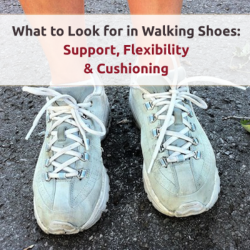Breathing is a natural bodily function that most of us don’t think twice about when walking; it just happens, you breathe in, you breathe out. However, unless you consciously focus on how you breathe, most likely you are doing it wrong.
By using the correct breathing technique, you can gain further benefits from walking besides weight loss and getting fit; benefits such as lowering your stress and increasing your endurance also occur when you learn how to breathe properly.
Breathe Properly for Lowering Stress
When your body senses an increase in heart rate and more rapid and deep breathing, as in walking, it releases a chemical in the brain called endorphins. Endorphins, not only relive stress, but they also induce relaxation, improve mood and increase self-esteem. It’s no wonder many call it the natural “feel good” drug.
Breathe Properly for Increasing Endurance
By breathing properly, you get the maximum amount of oxygen to your lungs which in turn get it to your muscles via your bloodstream. This allows your muscles to work harder and longer that would otherwise be possible if you were not breathing deeper than normal.
Proper Breathing Technique
While there is no set “rule” for breathing while walking, most experts agree that diaphragmatic breathing, or “belly breathing” as it is sometimes called, provides the most oxygen to your lungs.
Diaphragmatic breathing while exercising is different than breathing while at rest. To start:
- Relax your abdominal muscles slightly.
- Breathe deeply enough so that your stomach extends out on the inhale and contracts in on the exhale.
- Adjust the quickness of your breathing pattern as necessary to meet your oxygen needs while walking.
Pushing your stomach out on the inhale allows you to get much more air into your lungs; using your diaphragm on the exhale pushes more air out of your lungs. Whether you breathe through your mouth or nose is a personal preference. If you do breathe through your nose and you find you need more air than you can get, switch to breathing through your mouth.
Meditation Breathing
Some people like to focus on the rhythm of breathing while exercising. Breathe in deeply for three steps and exhale for three steps. By focusing on this rhythmic breathing, it becomes a sort of meditation practice or a point of focus.
Just Get Out – Breathe Properly and Walk!
Regardless if your goal for walking is weight loss, fitness, relaxation or relieving stress, it is an exercise program that can be done virtually anywhere; all that is required is a pair of walking shoes and the desire to get out and walk. So take a deep breath and get started!
If you’d like to get more out of your walking for fitness plan, check out the “Guide to Setting Your Walking Fitness Goals” for more in depth knowledge on the subject of walking for fitness. While you’re there, be sure to sign up for the free MyFitnessNut.com Newsletter to be kept up to date on the latest health and fitness topics.









